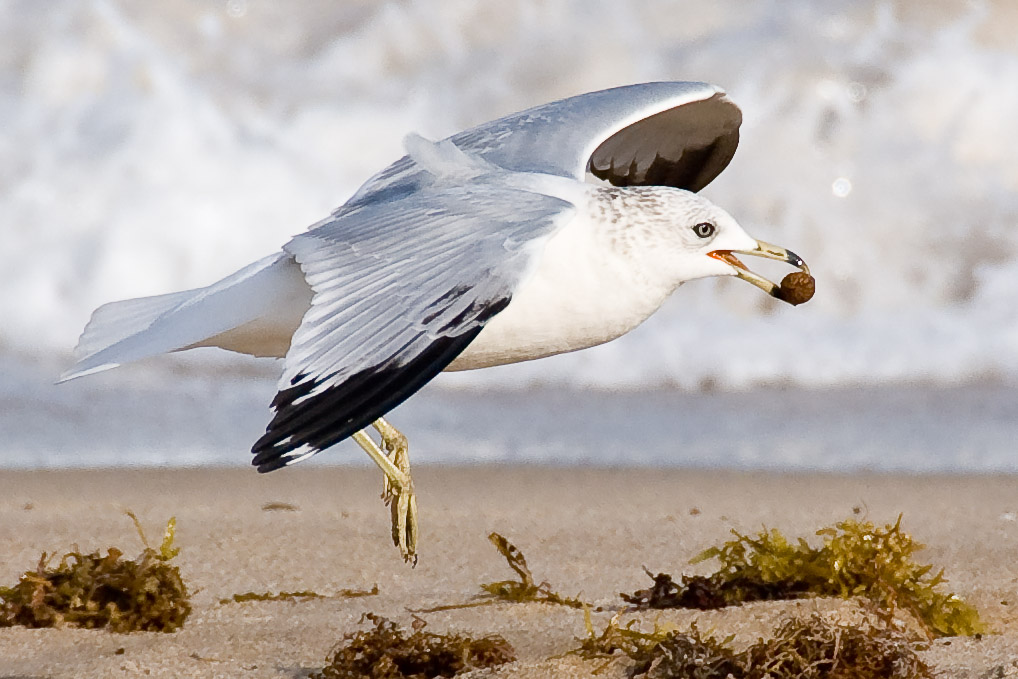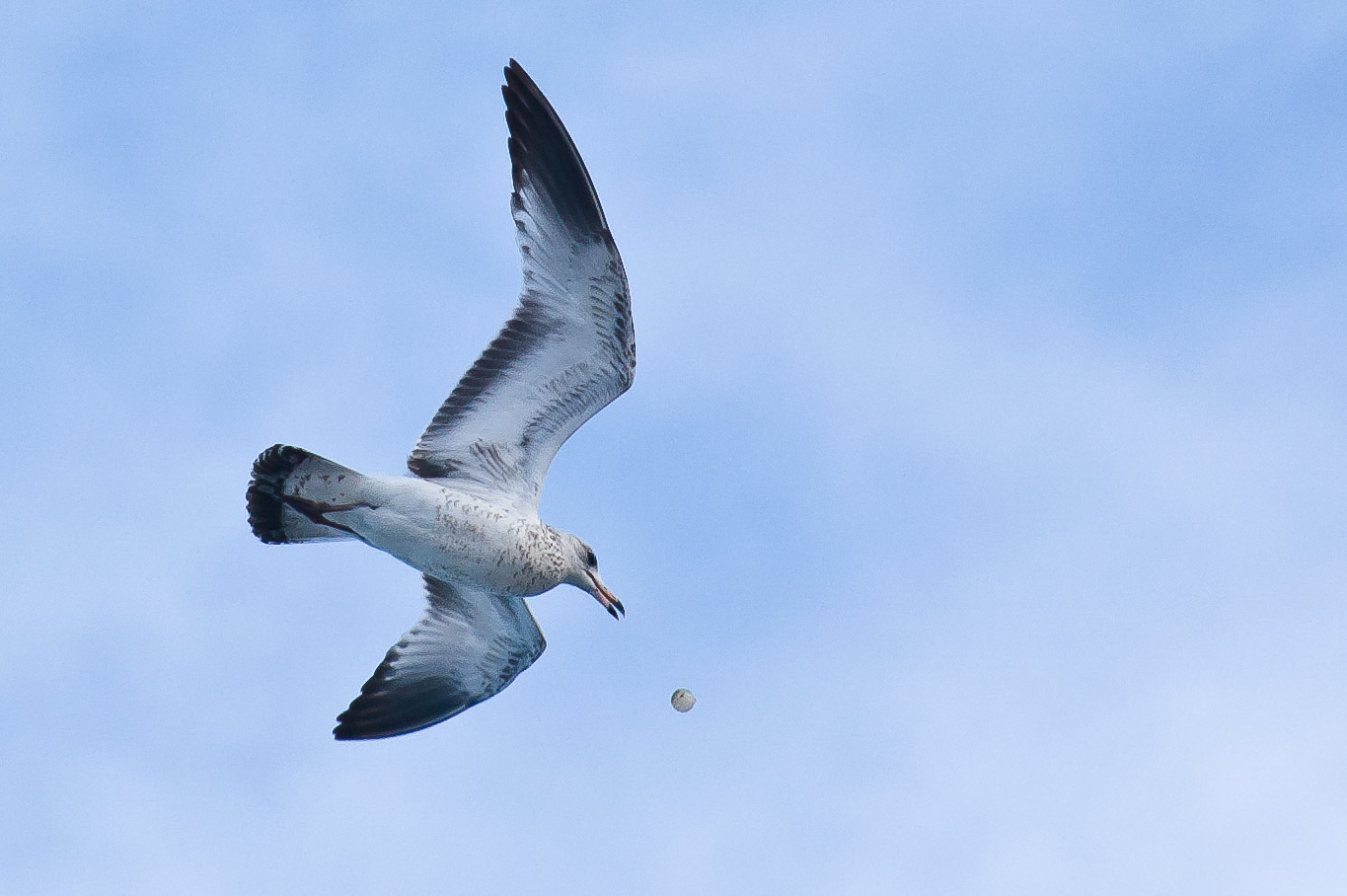Drop-catch Behavior in Gulls





These photos capture gulls behaving in a way I'd never seen before. They were repeatedly picking up a bit of flotsam from the beach, carrying it a few tens of feet high, and then dropping it. Sometimes the gull would just watch the object fall. Other times, it would dive and try to catch it.
I've since learned that this has been observed before, and is termed drop-catch behaviour. A study published in the journal Animal Behaviour (Drop-catch behaviour is play in herring gulls, Larus argentatus, Jennifer R. Gamble & Daniel A. Cristol, Animal Behaviour, 2002, 63, 339-345) concluded that, at least in some cases, such behaviour is play (as opposed to adaptive behaviour, such as feeding by dropping shellfish to break open their shells). This certainly matched what I observed, as the objects being dropped included non-food items such as bits of wood, and the bird took no interest in an item once it had landed on the beach.
More recently, Stephen Hewitt comes to a similar conclusion in an article in British Birds (Avian drop-catch play: a review, British Birds 106, April 2013, 206–216) .